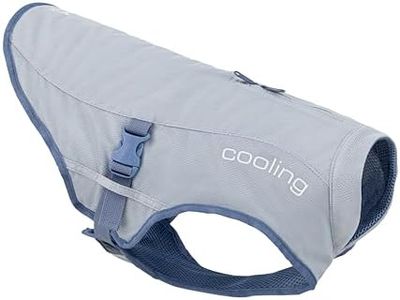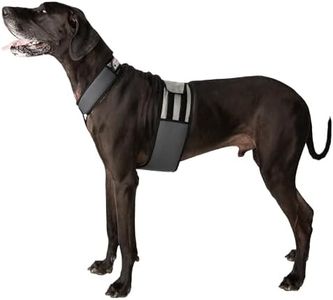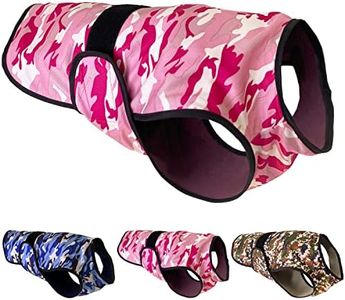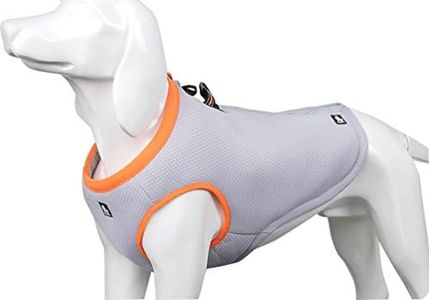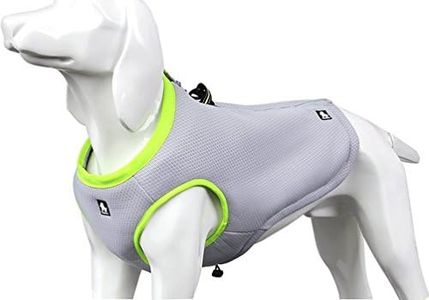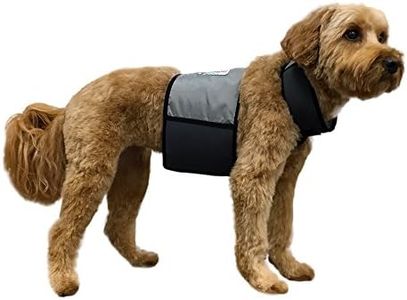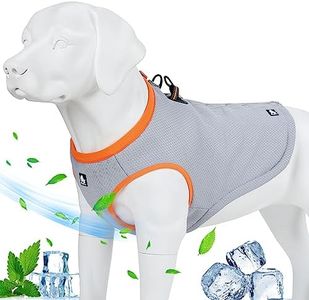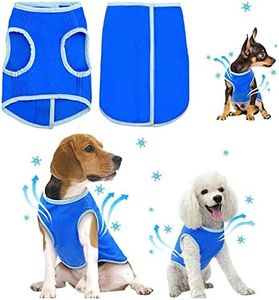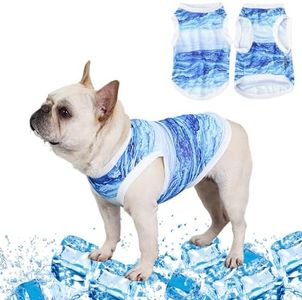We Use CookiesWe use cookies to enhance the security, performance,
functionality and for analytical and promotional activities. By continuing to browse this site you
are agreeing to our privacy policy
10 Best Cooling Vest For Dogs
From leading brands and best sellers available on the web.By clicking on a link to a third party's website, log data is shared with that third party.
Buying Guide for the Best Cooling Vest For Dogs
Choosing a cooling vest for your dog is all about helping your furry friend stay comfortable and safe when temperatures rise. Dogs can easily overheat, especially during outdoor activities in warm weather. A good cooling vest can help regulate your dog's body temperature and prevent heat-related issues. When picking the best option, you should consider factors like your dog's size, activity level, the environment you'll use it in, and how easy it is to put on and maintain. Understanding the main features will help you make a choice that keeps your dog cool, happy, and healthy.Cooling MethodThe cooling method defines how the vest helps reduce your dog's body temperature. Most vests use water evaporation, where you soak the vest in water, wring it out, and put it on your dog—evaporation then draws heat away. Others may use gel inserts or ice packs. Evaporative vests are usually lighter and easier to use, while gel and ice types can stay cooler longer but are bulkier. Choose an evaporative vest for regular, outdoor activities and ease of use. If you need to keep your dog cool for long periods or in places where you can't re-wet the vest often, consider a gel or ice-type, keeping in mind your dog's tolerance for weight and bulk.
Fit and AdjustabilityFit and adjustability refer to how well the vest conforms to your dog's body and can be resized for comfort. Good fit is crucial so the vest works properly and doesn't restrict movement. Look for vests with adjustable straps or closures for a snug, comfortable fit. Slim, active dogs may need more adjustable vests to avoid slipping, while broader breeds should have designs that allow chest and stomach adjustments. Always measure your dog's chest and neck to match sizing guides and pick adjustability features that suit your dog's unique shape and activity level.
Coverage AreaCoverage area means how much of your dog's body the vest covers. Some vests offer full back and chest coverage, while others only cover the back or a portion. More coverage often means better cooling, but can add weight and warmth if not well-ventilated. If your dog has a thick coat, opt for vests with moderate coverage to avoid discomfort. For short-haired or very active dogs in hot climates, more coverage provides better cooling where it's needed most. Choose a coverage level that balances effective cooling with your dog's comfort and activity style.
Ease of UseEase of use describes how simple it is to wet, wring out, put on, and secure the vest. Some use Velcro, zippers, or buckles, and some are quick to refresh in water. Vests that are easy to put on and take off are best if your dog is energetic or fidgety. Think about how often you'll need to re-soak the vest and whether you'll be doing this on walks, hikes, or at home. Pick a vest that matches your willingness to manage these tasks, so your dog doesn't fuss or get stressed each time you use it.
Material and DurabilityMaterial and durability focus on what the vest is made of and how well it holds up over time. Cooling vests are usually made from lightweight, breathable fabrics, but some are sturdier for active use. If your dog tends to run through brush or play rough, choose a vest with reinforced seams and tough, tear-resistant fabric. If you'll mainly use it for walks or city outings, lighter materials work well. Consider washing instructions too—pick a vest that is easy to clean but strong enough for your dog’s lifestyle.
